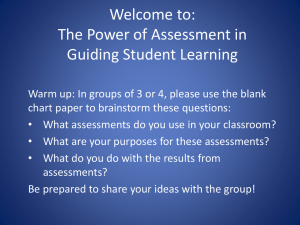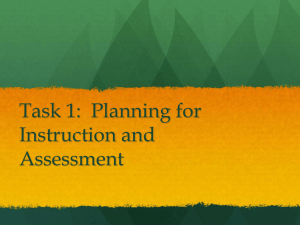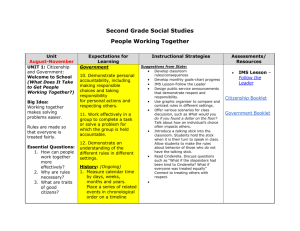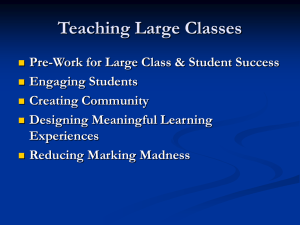spanish pats - SHC Education Internship
advertisement
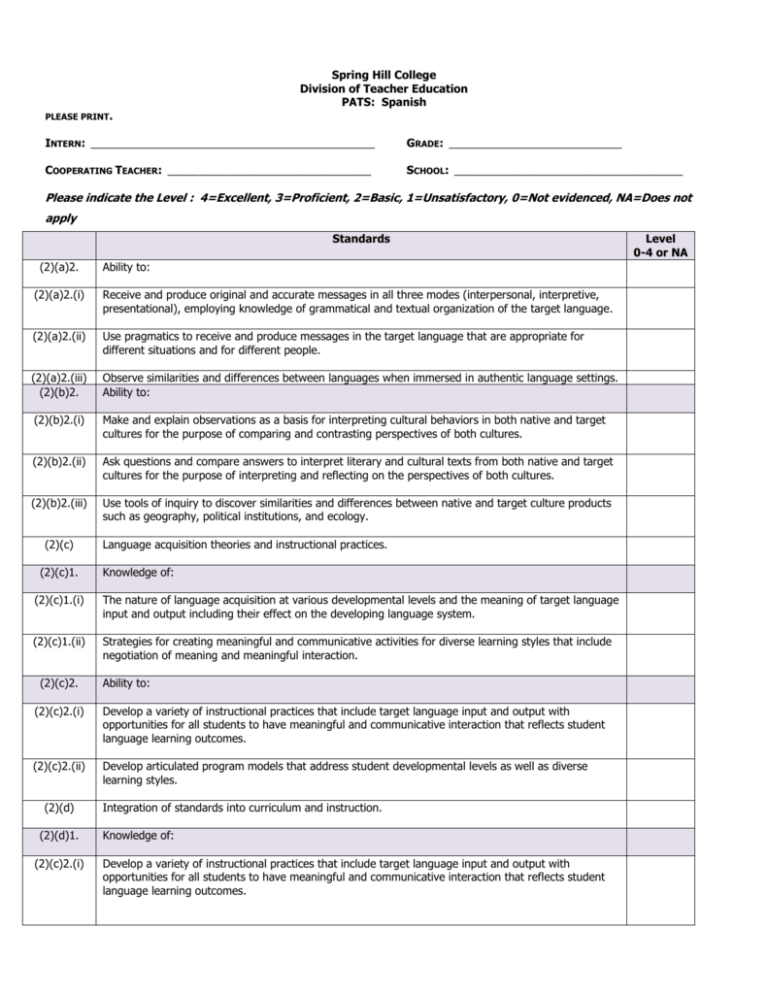
Spring Hill College Division of Teacher Education PATS: Spanish PLEASE PRINT. INTERN: ______________________________________________ GRADE: ____________________________ COOPERATING TEACHER: _________________________________ SCHOOL: _____________________________________ Please indicate the Level : 4=Excellent, 3=Proficient, 2=Basic, 1=Unsatisfactory, 0=Not evidenced, NA=Does not apply Standards (2)(a)2. Ability to: (2)(a)2.(i) Receive and produce original and accurate messages in all three modes (interpersonal, interpretive, presentational), employing knowledge of grammatical and textual organization of the target language. (2)(a)2.(ii) Use pragmatics to receive and produce messages in the target language that are appropriate for different situations and for different people. (2)(a)2.(iii) (2)(b)2. Observe similarities and differences between languages when immersed in authentic language settings. Ability to: (2)(b)2.(i) Make and explain observations as a basis for interpreting cultural behaviors in both native and target cultures for the purpose of comparing and contrasting perspectives of both cultures. (2)(b)2.(ii) Ask questions and compare answers to interpret literary and cultural texts from both native and target cultures for the purpose of interpreting and reflecting on the perspectives of both cultures. (2)(b)2.(iii) Use tools of inquiry to discover similarities and differences between native and target culture products such as geography, political institutions, and ecology. (2)(c) (2)(c)1. Language acquisition theories and instructional practices. Knowledge of: (2)(c)1.(i) The nature of language acquisition at various developmental levels and the meaning of target language input and output including their effect on the developing language system. (2)(c)1.(ii) Strategies for creating meaningful and communicative activities for diverse learning styles that include negotiation of meaning and meaningful interaction. (2)(c)2. Ability to: (2)(c)2.(i) Develop a variety of instructional practices that include target language input and output with opportunities for all students to have meaningful and communicative interaction that reflects student language learning outcomes. (2)(c)2.(ii) Develop articulated program models that address student developmental levels as well as diverse learning styles. (2)(d) (2)(d)1. (2)(c)2.(i) Integration of standards into curriculum and instruction. Knowledge of: Develop a variety of instructional practices that include target language input and output with opportunities for all students to have meaningful and communicative interaction that reflects student language learning outcomes. Level 0-4 or NA (2)(c)2.(i) Develop a variety of instructional practices that include target language input and output with opportunities for all students to have meaningful and communicative interaction that reflects student language learning outcomes. (2)(c)2.(ii) Develop articulated program models that address student developmental levels as well as diverse learning styles. (2)(d) (2)(d)1. Integration of standards into curriculum and instruction. Knowledge of: (2)(d)2.(i) Integrate national and State standards into curricular planning. (2)(d)2.(ii) Use strategies to incorporate the content indicated in national and State standards into instructional activities. (2)(d)2.(iii) (2)(e) Use standards and curricular goals to evaluate, select, design, and adapt instructional resources. Assessment of languages and cultures. (2)(e)1. (2)(e)1.(i) Knowledge of: Multiple ways to evaluate student progress using age- and level-appropriate assessments for a diverse student population. (2)(e)1.(ii) (2)(e)1.(iii) (2)(e)2. Procedures for analyzing results of assessments to determine the direction of future instruction. Procedures for interpreting and conveying results of student assessments to all stakeholders. Ability to: (2)(e)1.(i) Multiple ways to evaluate student progress using age- and level-appropriate assessments for a diverse student population. (2)(e)2.(i) Create age- and level-appropriate assessments for evaluating listening, reading, speaking, writing, and cultural awareness in both discrete and integrative formats. (2)(e)2.(ii) (2)(e)2.(iii) Analyze and reflect on results of assessments to determine the direction of future instruction. Interpret and report results of student assessments to all stakeholders and create opportunities for productive discussions of these results. (2)(f) (2)(f)1. Professionalism. Knowledge of: (2)(f)1.(i) Professional organizations at local, state, and national levels. (2)(f)1.(ii) The value of advocacy for learning languages other than English. (2)(f)2. Ability to: (2)(f)2.(i) Select appropriate professional development opportunities to strengthen linguistic and cultural competence. (2)(f)2.(ii) Promote learning of languages other than English to help students succeed as responsible members of a multicultural society. Signed: _______________________________________________________ Cooperating Teacher or Date: ___________________________ Signed: _______________________________________________________ College Supervisor Date: ___________________________ 08/2014



